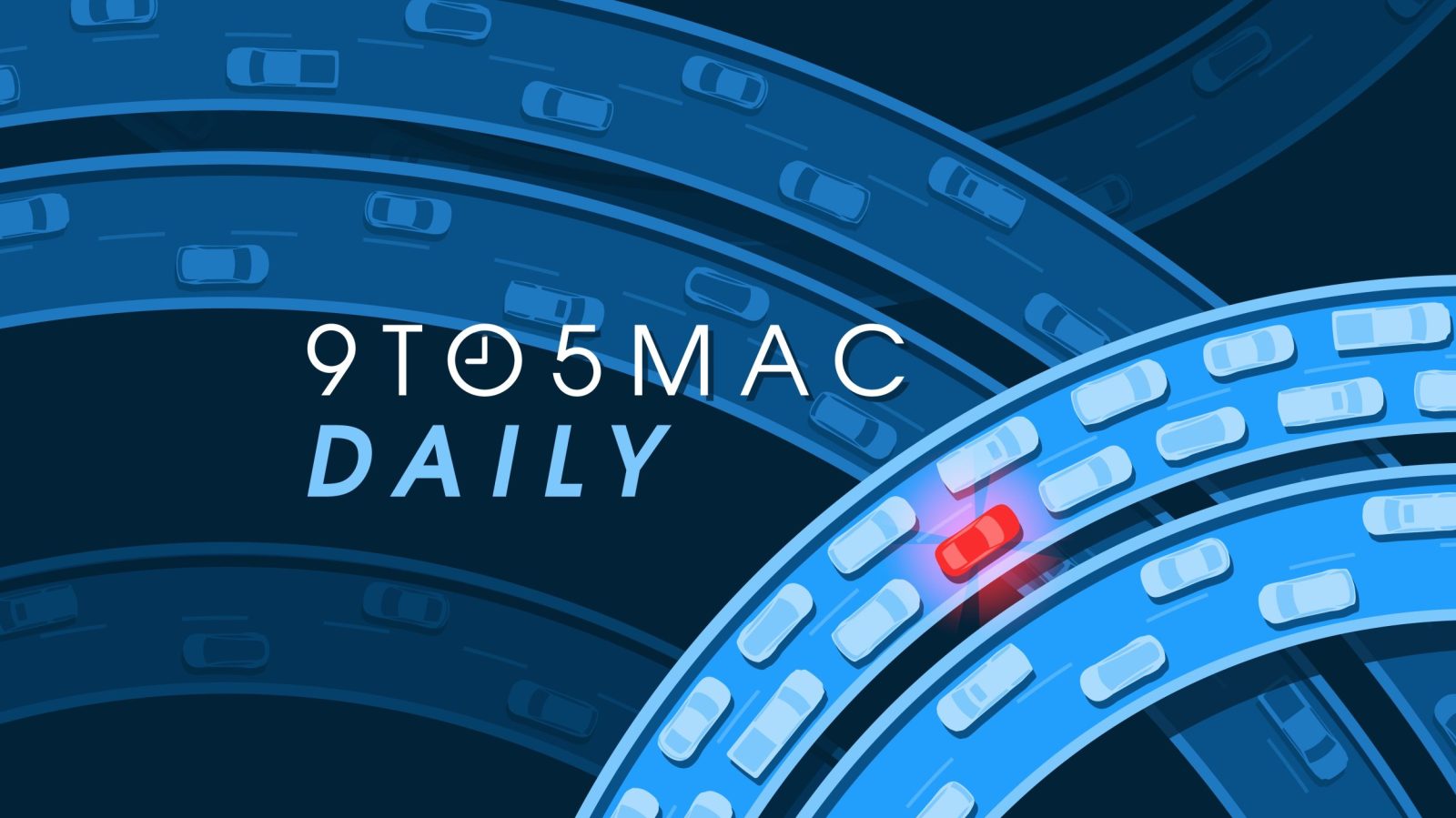The Supreme Court Is Hearing Arguments on the TikTok Ban Today. Here’s What to Expect



The Yeedi Cube doesn’t have the modularity and extremities of some of the cool new robot vacuums we’ve seen at CES 2025, but the self-emptying, self-cleaning mopping robovac is also much more reasonably priced. It’s even cheaper today at Amazon, where you can buy it for $299.99 ($260 off) when you clip an on-page coupon. That’s the lowest price we’ve seen yet on the budget robovac.
The Yeedi Cube can capably map and remember several rooms, including designated no-clean zones that you can set within the mobile app. While it doesn’t have AI-powered obstacle avoidance like some of the pricier robots we test, we found its laser-based navigation system works well enough to traverse floors that don’t have laundry, clothes, or pet waste strewn about. And if it does get stuck, you can easily pick it up and reposition it thanks to an integrated carrying handle and a dedicated spot clean button.
While we wish it had better brushes (it can get easily tangled with pet hairs), its 5,100Pa suction is good enough to lift loose dirt, cereal, and the like. It also has a one-liter fluid tank and vibrating microfiber pads that can mop hard flooring with great effectiveness. The do-it-all robovac can also empty its own dust bin and water tank, and clean and dry itself at the charging base.

After adding support for Nest Doorbell notifications in 2024, Google TV is working on an update that will allow users to send responses through the doorbell directly from their TV.
more…
Listen to a recap of the top stories of the day from 9to5Mac. 9to5Mac Daily is available on iTunes and Apple’s Podcasts app, Stitcher, TuneIn, Google Play, or through our dedicated RSS feed for Overcast and other podcast players.
Sponsored by HabitView: Change your habits, change your life! Download on the App Store today.

9to5Mac Security Bite is exclusively brought to you by Mosyle, the only Apple Unified Platform. Making Apple devices work-ready and enterprise-safe is all we do. Our unique integrated approach to management and security combines state-of-the-art Apple-specific security solutions for fully automated Hardening & Compliance, Next Generation EDR, AI-powered Zero Trust, and exclusive Privilege Management with the most powerful and modern Apple MDM on the market. The result is a totally automated Apple Unified Platform currently trusted by over 45,000 organizations to make millions of Apple devices work-ready with no effort and at an affordable cost. Request your EXTENDED TRIAL today and understand why Mosyle is everything you need to work with Apple.
A new report from Check Point Research details how a new variant of the infamous Banshee stealer malware from Russian-speaking cybercriminals takes a page from Apple’s own security practices to evade detection. The malware remained undetected for over two months by cleverly incorporating the same encryption methods as Mac’s XProtect antivirus detection suite.
If you’re an avid reader of Security Bite, you’ve heard me say (more than once) that malware stealers, usually through malware-as-a-service (MaaS) business models, are currently the largest threat to Mac users. They’re destructive, targeting your iCloud Keychain passwords, cryptocurrency wallets, sensitive information from files, and even system passwords like a stealthy low-orbiting ion canon. Cybercriminals will often embed this malicious code in seemingly legitimate applications as a ploy to infect machines.
more…

It's always gratifying when something promised at CES actually comes to market. That's the case with the Pebble Flow electric trailer that my colleague Sam Rutherford checked out last year's CES. I was able to see the final draft on the show floor this week and was adequately impressed. Like the (four!) other sustainable, electrified tiny homes we saw this year, it was shiny and luxe and decked out in wood tones, glass, metal and white polymers.
The main features that drew us to the Flow last year remain intact: sleeping for four, a 45 kWh battery and a 1.1 kW solar panel, full kitchen and bath, a queen-size Murphy bed that transforms into a shared working space and a convertible dinette at the other end. The kitchen faucet even spins 180-degrees and out the window to let you do some washing up outside.
The option for the Magic Pack add-on is still here. For an upcharge, it allows the Flow to self-park, automatically hitch itself and provide it's own propulsion from dual motors so it's not such a drag (literally) on the vehicle that's towing it.
One of the coolest features is still the glass separating the bathroom from the rest of the cabin. At the push of a button it goes from clear to opaque so you can have some privacy without having to kick your entire family out of the trailer.
As for what's new, those changes were partly sourced from prospective customers. One directive was "more windows," so a skylight was added, along with a larger window at the back. The cupboards are now easier to access by flipping up instead of down. And the overall shape was refined to be more aerodynamic.
Walking around in the Flow, everything felt soothing and clean. The bed was so plush I wanted to melt into it. The seating area was inviting and spacious. It was tough to leave this homey pod (especially considering how stupendously hard it is to just find a place to sit down at CES). I don't have a vehicle that can pull a trailer, but I would love to park one of these in my backyard. Even if I never took it on the road, I'd happily hang out in its well-appointed comfort and even (reluctantly) give it up to guests when they visited.
Production on the Flow will begin early this year and shipping is scheduled for spring. The option without the motor assist and self-parking features will go for $109,500. If you want the Magic Pack package, that brings your price to $135,500. There's also a "Founders Edition" with a limited-edition color scheme and a few more upgrades going for $175,000.
©
© Amy Skorheim for Engadget
There was no question that NVIDIA's RTX 5000 GPUs would be one of the biggest stories at CES 2025, and I figured Intel and AMD to arrive with some new hardware of their own. But I didn't expect that each of these companies would, in their own way, be putting the pedal to the metal when it comes to power for their chip designs. After all, we've spent the last few years covering AI PC CPUs that was targeting efficiency more than raw performance.
While NVIDIA RTX 5000 GPUs seem to deliver the performance leap we expected over its 2022-era cards, AMD is also redefining what's possible for mobile workstations with its Ryzen AI Max chips, which combine powerful graphics with gobs of integrated memory. Intel isn't sitting still either — it's finally moving Arrow Lake into the high-performance and gaming arena with its Core Ultra 200HX chips, which can reach up to 24 cores and 5.5GHz speeds.
I'm not just talking about power in the sheer performance sense, either. NVIDIA's $1,999 RTX 5090 requires a 1,000-watt power supply to function and uses up to 575 watts. The Ryzen AI Max chips, meanwhile, could eat up as much as 120-watts. Intel's Core Ultra 200HX chips go as high as 120-watts. Clearly, none of this hardware is meant for anyone concerned about their energy bills or potential laptop battery life.
| RTX 5090 | RTX 5080 | RTX 5070 Ti | RTX 5070 | RTX 4090 | |
| Architecture | Blackwell | Blackwell | Blackwell | Blackwell | Lovelace |
| CUDA cores | 21,760 | 10,752 | 8,960 | 6,144 | 16,384 |
| AI TOPS | 3,352 | 1,801 | 1,406 | 988 | 1,321 |
| Tensor cores | 5th Gen | 5th Gen | 5th Gen | 5th Gen | 4th Gen |
| RT cores | 4th Gen | 4th Gen | 4th Gen | 4th Gen | 3rd Gen |
| VRAM | 32 GB GDDR7 | 16 GB GDDR7 | 16 GB GDDR7 | 12 GB GDDR7 | 24 GB GDDR6X |
| Memory bandwidth | 1,792 GB/sec | 960 GB/sec | 896 GB/sec | 672 GB/sec | 1,008 GB/sec |
| TGP | 575W | 360W | 300W | 250W | 450W |
So what do you get for all of this energy consumption? AMD says the RTX 5090 will deliver roughly twice the performance of its previous flagship, the $1,499 RTX 4090. In a 4K Cyberpunk 2077 demo with full ray tracing, the 4090 hovered around 108 fps while the 5090 was reaching 240 fps. That frame count is a bit controversial, though, since the RTX 5090's DLSS 4 AI upscaling generates three frames for every natively rendered frame. The end result may look smoother to most people, but some gamers might question the integrity of so-called false frames.
It's those same AI-generated frames that allow NVIDIA to proclaim that the $549 RTX 5070 could be as powerful as the 4090. That may be true when it comes to pure frames-per-second count, but it certainly won't be for rasterized performance without DLSS 4.
AMD's Ryzen AI Max chips aren't aiming for the same sort of graphical heights as NVIDIA's new GPUs, but they're still notable for the sheer amount of hardware they contain. The top-of-the-line Ryzen AI Max+ 395 sports 16 CPU Zen 5 cores, 50 TOPS of AI performance and 40 RDNA 3.5 GPU compute units. According to AMD, it should be on-part with Apple's 14-core M4 Pro chip (and even faster in the Vray benchark), and it's 2.6 times faster in 3D rendering than Intel's Core Ultra 9 288V.
In an interview with AMD CVP and product CTO Joe Macri, he told Engadget that the success of Apple Silicon as a major reason why the Ryzen AI Max exists. "What Apple showed was consumers don't care what's inside the box," he said. Macri later noted, "I always knew, because we were building APUs, and I'd been pushing for this big APU forever, that I could build, a system that was smaller, faster, and I could give much higher performance at the same power."
AMD also briefly previewed its RDNA 4 graphics at CES, though at this point it's clearly aiming for the mid-range and not NVIDIA's RTX 5090. Notably, AMD will debut a new AI powered upscaling technology in RDNA 4 GPUs, FidelityFX Super Resolution 4 (FSR 4). That should finally give AMD a way to directly compete against NVIDA's DLSS, which for years has looked better than earlier versions of FSR. The first RDNA 4 cards, the Radeon RX 9070 and 9070 XT, will arrive sometime in the first quarter.
Intel's presence at CES 2024 was more muted than the competition, but loyalists will likely appreciate the new Core Ultra 200HX chips. While they scale back NPU performance from its recent AI PC hardware (12 TOPS down from 48 TOPS), the Core Ultra 9 285HX looks like a 24-core beast. It'll be interesting to see how it competes AMD's Ryzen AI 300 hardware, though it likely won't stand a chance against the Ryzen AI Max when paired up with a discrete GPU.
©
© Devindra Hardawar for Engadget
It has been more than a week since reports first emerged about a "glowing ring of metal" that fell from the sky and crashed near a remote village in Kenya.
According to the Kenya Space Agency, the object weighed 1,100 pounds (500 kg) and had a diameter of more than 8 feet (2.4 meters) when measured after it landed on December 30. A couple of days later, the space agency confidently reported that the object was a piece of space debris, saying it was a ring that separated from a rocket. "Such objects are usually designed to burn up as they re-enter the Earth’s atmosphere or to fall over unoccupied areas, such as the oceans," the space agency told The New York Times.
Since those initial reports were published in Western media, a small band of dedicated space trackers have been using open source data to try to identify precisely which space object fell into Kenya. So far, they have not been able to identify the rocket launch to which the large ring can be attributed.


© Stringer/Anadolu via Getty Images
Only 5 percent of US consumers want their next vehicle to be a battery electric vehicle, according to a new survey by Deloitte. The consulting company gathered data from more than 31,000 people across 30 countries as part of its 2025 Global Automotive Consumer Study, and some of the results are rather interesting, as they pertain to technologies like new powertrains, connectivity, and artificial intelligence.
Among US consumers, internal combustion engines (ICE) remain number one, with 62 percent indicating that their next car will not be electrified. Another one in five would like a hybrid for their next vehicle, with a further six percent desiring a plug-in hybrid. (The remaining survey respondents either did not know or wanted some other powertrain option.)
By contrast, only 38 percent of Chinese consumers want to stick with ICE; meanwhile, 27 percent of them want a BEV next. That's a far higher percentage than in other large nations—in Germany, only 14 percent want a BEV; in the UK and Canada, only eight percent are BEV-bound; and in Japan, the number is a mere 3 percent.


© Getty Images
The future of TikTok is at stake and could be decided soon as the U.S. Supreme Court considers free speech arguments over a potential nationwide ban. If its China-based owner, ByteDance, doesn’t relinquish control of the app, TikTok might no longer […]
The post TikTok’s future hangs in the balance as US Supreme Court weighs free speech arguments over ban first appeared on Tech Startups.



Schools across the US and Canada are warning parents that a data breach may have leaked information for students and employees. The K-12 operations platform PowerSchool, which supports over 60 million students and has over 18,000 customers worldwide, suffered a breach that could’ve exposed names and addresses of students and educators and, in some cases, more sensitive information like Social Security numbers, medical information, and grades.
As initially reported by Bleeping Computer, threat actors got into PowerSchool’s support platform using compromised credentials. PowerSchool told Bleeping Computer that only a “subset” of schools are affected but has not provided a count of affected school districts or people. Additionally, the outlet says that in a note provided to its customers, PowerSchool claimed it paid a ransom request and “...has received reasonable assurances from the threat actor that the data has been deleted and that no additional copies exist.”
PowerSchool’s website and social media channels have no mention of the data breach or directions for people who may have been affected.
In an email to The Verge, PowerSchool spokesperson Beth Keebler wrote that the company became aware of “a potential cybersecurity incident” on December 28th and has “taken all appropriate steps to prevent the data involved from further unauthorized access or misuse.” Keebler also wrote:
The incident is contained and we do not anticipate the data being shared or made public. PowerSchool is not experiencing, nor expects to experience, any operational disruption and continues to provide services as normal to our customers.

Valerion announced a new feature for its VisionMaster Max projector at CES 2025 that will improve setup flexibility. The company will offer alternate lenses for the projector — a feature typically only offered on professional-grade home theater hardware — that can be swapped by users to change the size of the image it produces or how far it can project. That will accommodate a wider range of installations, from smaller living rooms to spacious dedicated home theaters, without sacrificing image resolution.
The VisionMaster Max was originally announced at IFA 2024 by Valerion, which is a sister brand to AWOL Vision that focuses on ultrashort throw (UST) projectors. The brand’s VisionMaster line debuted through a Kickstarter crowdfunding campaign last October, including the Max model, which offered an optical zoom feature that allows it to project images from 40 to 300 inches in size.
/cdn.vox-cdn.com/uploads/chorus_asset/file/25825580/valerion2.jpg) Image: Valerion
Image: Valerion
The swappable lenses are a new feature for the projector, which is now available for purchase for $3,999. Valerion hasn’t announced which additional lens options will be available for the VisionMaster Max or how much they’ll add to the price. The stock lens has a throw ratio of 0.9-1.5:1, while Valerion was showing off an alternative with a 1.3-2.1:1 throw ratio — better for use in larger rooms — at CES, according to New Atlas.
The upgraded version of the VisionMaster Max offers the same features and functionality as the one announced at IFA. It’s a 4K triple laser projector capable of producing 3,000 ISO lumens of brightness, according to Valerion, and has the ability to upscale lower-res content using AI. It supports the IMAX Enhanced, Dolby Vision, and HDR10 Plus standards and includes a low input lag mode for gamers with refresh rates up to 240Hz when stepping down to a 1080p resolution.
The VisionMaster Max is an all-in-one projector, so it includes a pair of 12-watt speakers with support for DTS:X and Dolby Audio. It’s got three HDMI ports, including one with eARC support. In addition to Wi-Fi and Bluetooth, it can be connected to the internet using an ethernet cable if the wireless internet signal in your home theater is problematic. And the projector runs Google TV, so you can install apps for various streaming services, including Netflix, Disney Plus, and Amazon Prime Video.

Apple Arcade is welcoming the new year with ten new games, seven of them launching today. The remainder – which includes PGA TOUR Pro Golf – will be available from February 6 …
more…

